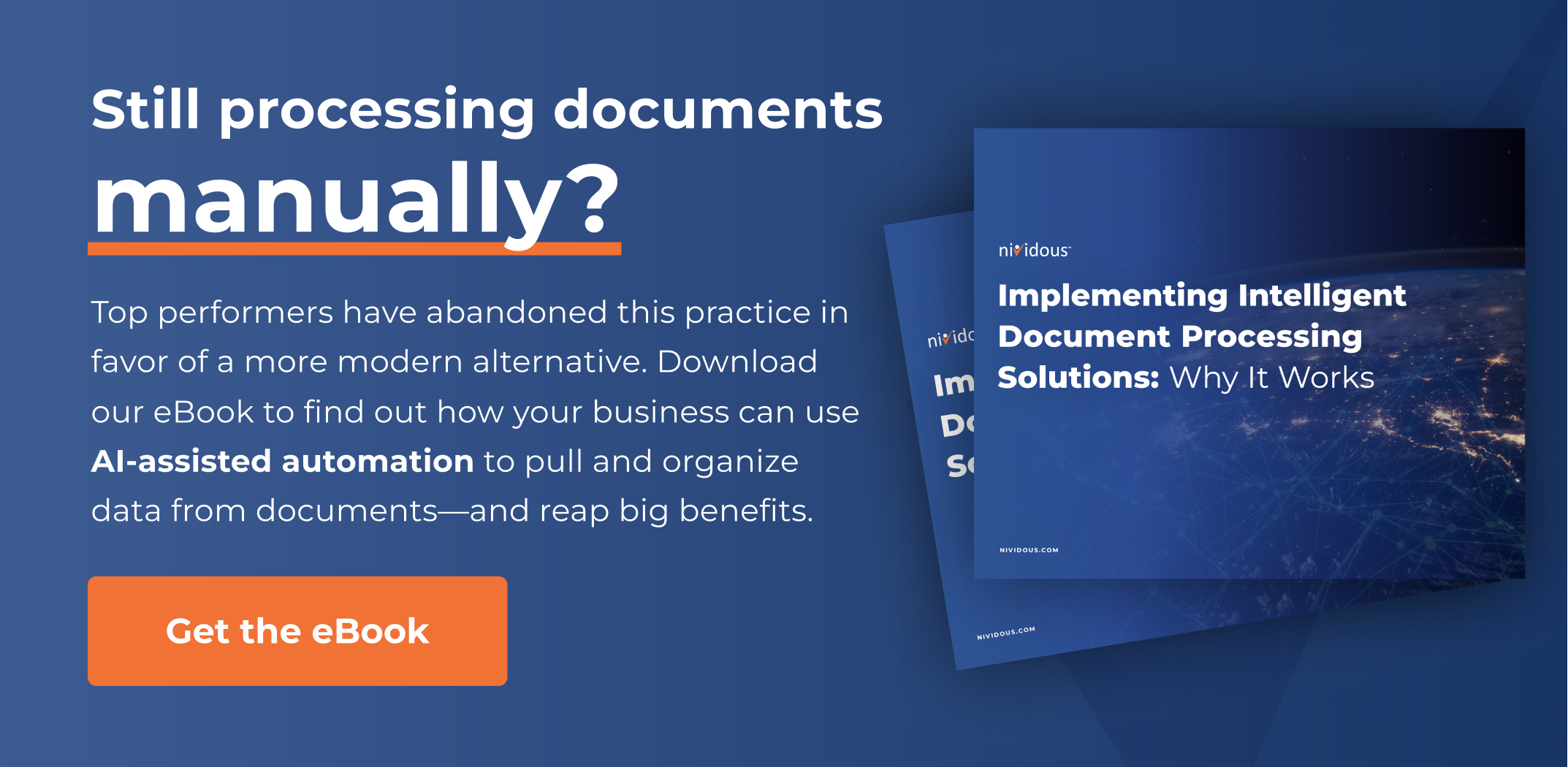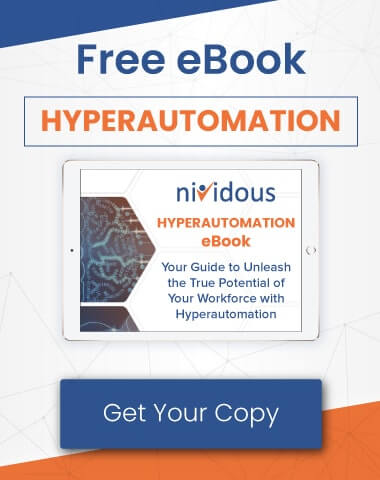Few would argue with the fact that the biggest driver of digital transformation wasn’t C-suite executives—it was COVID-19.
A recent study conducted by IBM revealed that nearly six in 10 executives have accelerated their digital transformations as a result of the pandemic, many of whom acknowledged the sudden removal of what were once considered barriers to change, such as employee reluctance and technological immaturity. Considering the massive disruption to traditional ways of work, it’s no wonder that so many businesses are now waking up to the fact that digital initiatives hold the key to staying competitive.
The question now is: How do companies get the job of digital transformation done right?
To find the answer, business leaders are starting to look to digital transformation frameworks—ways to frame their initiatives for the best chance of success. At Nividous, we aren’t proponents of any one framework in particular, most of which have been developed by leading consulting companies like Gartner and McKinsey. But having led a number of organizations through their own digital journeys over the past few years, we do have an insider’s view of the most important areas where transformation needs to occur:
- People
- Processes
- Data
- Ecosystems
- Technology
No matter which digital strategy framework you choose, it should take these five categories into consideration. If any one of them is excluded from your approach, you run the risk of failure—or, at the very least, missing out on some of the incredible business opportunities that result from a digital transformation done right.
Looking for a partner who can guide you through your digital transformation?
Talk to us to find out how our team of experts and our intelligent automation platform can help!
A Multi-dimensional Digital Transformation Framework: 5 Action Categories
Making the change to a digital-first mindset is a complex proposition. Using a framework for digital transformation provides a roadmap of sorts for exactly how to proceed.
To clarify, a digital transformation framework is a structured approach to evaluating opportunities, gathering evidence to direct your path for growth, and creating a plan of action.
Why is having a structured approach important? Because 78% of enterprises struggle to “scale and sustain” their digital investments, never achieving the desired return. They fail to consider their organizational silos and current business models, undervalue the importance of change management techniques, or invest in the wrong technology, among other mistakes. Successfully transforming an entire organization requires careful planning and the orchestration of multiple components—and that’s where a digital strategy framework comes in. It helps companies plan and execute a transformation in an organized and logical fashion, taking all the important components into consideration along the way.
Let’s dig into an explanation of these important components, starting with the one we consider the most important: your people.
1. People
In any digital transformation initiative, you need to consider the human side first. In our view, that’s more important than anything else, because people are the most complicated piece to understand.
It’s very easy to put new processes and technologies in place, but getting people to use them and be happy using them is much more difficult. It’s people that have to go through the change. This is why the role of leadership is so important. As a leader, it’s your job to smooth the transition for employees from what they’re doing now to what you want them to do.
To be successful, you must make the benefit clear. Maybe it will make their lives easier. Or, even if the change will make their lives a bit harder, they understand why and can see the value in it. (If the company makes more money, hopefully, that will translate to greater earnings for them as well.) People must buy into the transformation, especially if it’s making their lives more difficult.
When good employees refuse to use the good technical solutions you implement, it may be because they don’t understand why they have to do more work—or perhaps they feel the solution is inadequate. If no one consulted with them upfront, your technical solution may be missing a key element that you would have known about had you involved them in the decision early on. This is more commonly the case when executive-level managers determine the requirements for a new system without first investigating how people are actually doing the work.
2. Processes
Leaders tend to consider processes more frequently than people, but there are cases when processes are totally left out of the framework for digital transformation, too. Sometimes, the main focus is on technology—people want to build something shiny and new, and they think it will solve all their problems. But digitization won’t fix a broken process. (Here, we tell our clients that automation won’t fix a broken process; you’ll just be doing the wrong thing faster.)
If your current process is broken, you’ll get no value from digitizing it. Instead, your digitization strategy framework should include reviewing and evaluating all your processes to make sure they are optimized. There may be very simple fixes that will make the workflow faster, simpler, or more valuable to the business.
3. Data
Remember when The Economist claimed that “the world’s most valuable resource is no longer oil, but data”? One of the biggest advantages of digital transformation is the availability of digital data. Knowing the status of customer orders, the average time it takes your customer service reps to resolve an issue, or the percentage of on-time project completions is immensely helpful to a business. While it’s not impossible to maintain this information in a non-digital world, having it all in digital form—and even in real time—makes it immensely more useful. You can make smarter (and faster) decisions because they’re based on actual data you can access in seconds.
Your digital transformation framework should consider the various ways you want to collect and gather data for easy accessibility. Whether it’s via dashboards, reports, or emailed PDFs, you need the quickest and most seamless ways to access that timely information, so you can effectively run your business. Data is a very important piece, and one of the big drivers for digital transformation in the first place.
4. Ecosystems
In years past, companies maintained internal technology systems containing information about products, orders, and internal operations. But today, the internet makes it possible for businesses to connect with a variety of external ecosystems, making tasks more complicated. Staying competitive requires you to interact digitally with numerous partners—suppliers, resellers, and even customers—and tap into their data for strategic purposes.
In many cases, it’s easy to integrate outside ecosystems into your processes—such as allowing customers to place an order via text or chatbot rather than by phone. In other cases, it’s not so simple. To gain the most value from your digital transformation, your framework should find ways to integrate internal IT systems with third-party capabilities, so they work together seamlessly and add value to your business.
5. Technology
Technology adoption is the most obvious component of a digital strategy framework. But contrary to what some might think, technology shouldn’t be the driver of transformation; business strategy should. Technology is only the tool that helps realize the strategy.
That said, technology is an important piece of the puzzle. Using the wrong tool for the job is a waste of time and money and will inevitably frustrate employees, tanking your chances of success. If the technology solution you’re considering doesn’t add value to your company and its services, move on to an option that does.
Looking for a digital transformation partner? Let’s work together.
No matter which framework for digital transformation you decide to use, Nividous can help you make a lasting change that will improve business performance over the long term. Here’s why:
- We’re business process experts. Our cofounders, as well as our core engineering team, came from a business process management company. Workflows are our specialty; we apply this expertise to every project we take on. Our focus is on optimizing processes in their entirety, rather than simply automating discrete tasks. This approach ensures more meaningful changes to the business.
- Our solutions provide insightful data. Many automation solutions create data related to a specific task; in contrast, the Nividous hyperautomation platform gives you data for entire end-to-end processes—even those that include human activities. Our workflow engine’s business process management component brings human and automated steps together, gathering the kind of data you need to make real performance gains.
- Our platform makes disparate ecosystems work together seamlessly. New tech or old tech, our intelligent automation platform is capable of integrating it all. There’s no need for complicated API coding to link multiple systems; our platform acts as the API and enables them to function as one unified system.
- Our technology is advanced and highly scalable. The Nividous platform natively combines robotic process automation (RPA), artificial intelligence (AI), and business process management (BPM) to help organizations work at peak efficiency. It is designed to expedite quick adoption and can usually be rolled out into production within three to four weeks.
If you’re looking for a partner that can guide you through every aspect of your digital transformation, please reach out to us today. Or, schedule a demo of our platform—we’d love to show you around!






